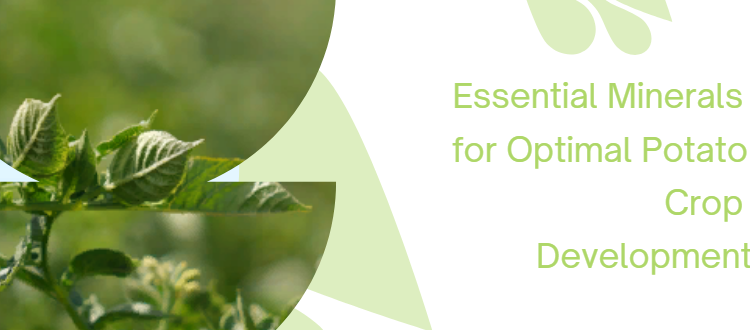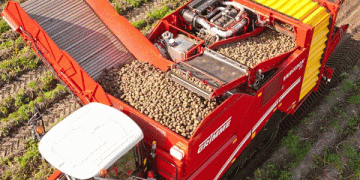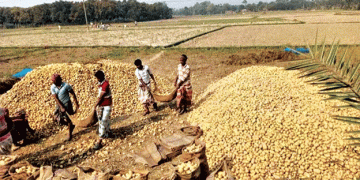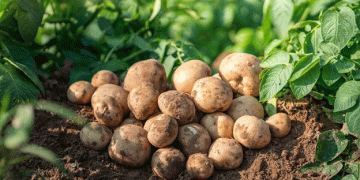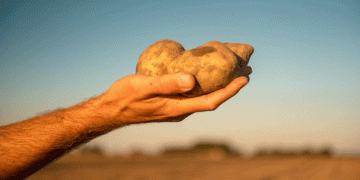#PotatoCrops #EssentialMinerals #CropHealth #SulfurSupplementation #CalciumForPotatoes #BoronInAgriculture #MagnesiumDeficiency #AgriculturalNutrition
We delve into the importance of sulfur, calcium, boron, magnesium, and other micronutrients in enhancing tuber numbers, preventing common and powdery scab, ensuring cell integrity, and supporting root extension. Understanding the role of these minerals and their application methods can lead to improved potato quality, disease resistance, and overall yield.
Potatoes (Solanum tuberosum) are one of the most widely consumed and economically significant crops worldwide. To maximize their growth and yield, it is crucial to provide them with the necessary minerals during their growth stages. Several essential minerals play a pivotal role in the potato plant’s development and overall health.
Sulfur (S):
Sulfur is a vital nutrient for potatoes as it contributes to increasing tuber numbers and acts as a protective measure against Common and Powdery Scab diseases. A recommended preplant application of 35 to 45 kg sulfate-S/ha is sufficient to meet typical crop requirements (Hopkins, Stark, and Kelling 2020). Usually, this rate is supplied at planting in combination with other nutrients like potassium (potassium sulfate, 16% S), phosphorus (single superphosphate, 11% S), or nitrogen (ammonium sulfate, 24% S). Additionally, sources like gypsum (calcium sulfate, 10 to 18 % S) and epsom salts/kieserite (magnesium sulfate, 15% S) can provide sulfur. Elemental sulfur can also be applied to lower the pH of alkaline soils, but it becomes available to plants over time.
Calcium (Ca):
Calcium is particularly crucial during tuber initiation and serves to protect against quality disorders like internal brown spot or heat fleck. If the exchangeable calcium concentration falls below 400 mg/kg on sandy soil or 700 mg/kg on heavy soils, supplementation is necessary (Hopkins, Stark, and Kelling 2020). The application of approximately 500 kg Ca/ha through pre-planting lime (35 to 40% Ca) or gypsum (12 to 20% Ca) is recommended. Calcium can also be supplied through irrigation systems as calcium nitrate (19% Ca) or in combination with other fertilizers like single superphosphate (18 to 20% Ca).
Boron (B):
Boron, in conjunction with calcium, plays a crucial role in maintaining cell integrity and contributes to the synthesis of the hormone auxin, which supports root extension. Adequate boron levels are essential for optimal potato growth.
Magnesium (Mg):
Deficiency in magnesium can occur if the exchangeable Mg falls below 100 mg/kg (Hopkins, Stark, and Kelling 2020). To prevent this, magnesium can be broadcast at planting, especially if potassium has also been applied, as potassium can hinder magnesium uptake. Common sources of magnesium include magnesium sulfate (15% Mg) and dolomite (Ca-Mg Carbonate; 8 to 13% Mg).
Proper mineral supplementation and management have significant consequences for potato crops. Ensuring an adequate supply of essential minerals results in:
Increased tuber numbers and enhanced disease resistance, thanks to sulfur applications.
Improved tuber initiation and reduced risk of quality disorders due to sufficient calcium levels.
Enhanced cell integrity and root extension supported by the presence of boron.
Prevention of magnesium deficiency, which can adversely impact overall plant growth.
By understanding the role of each mineral and their application methods, farmers can optimize their potato crop’s health, yield, and marketability.
Source: Australian Potato Growers
